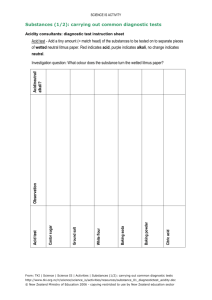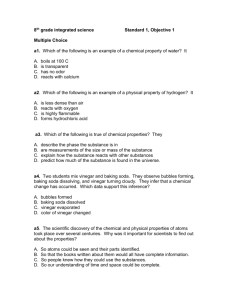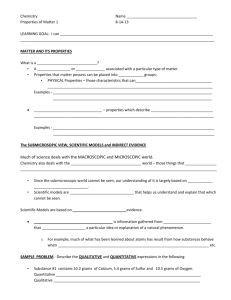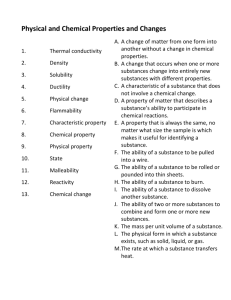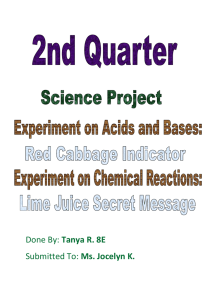Substances (1/2): carrying out common diagnostic
advertisement
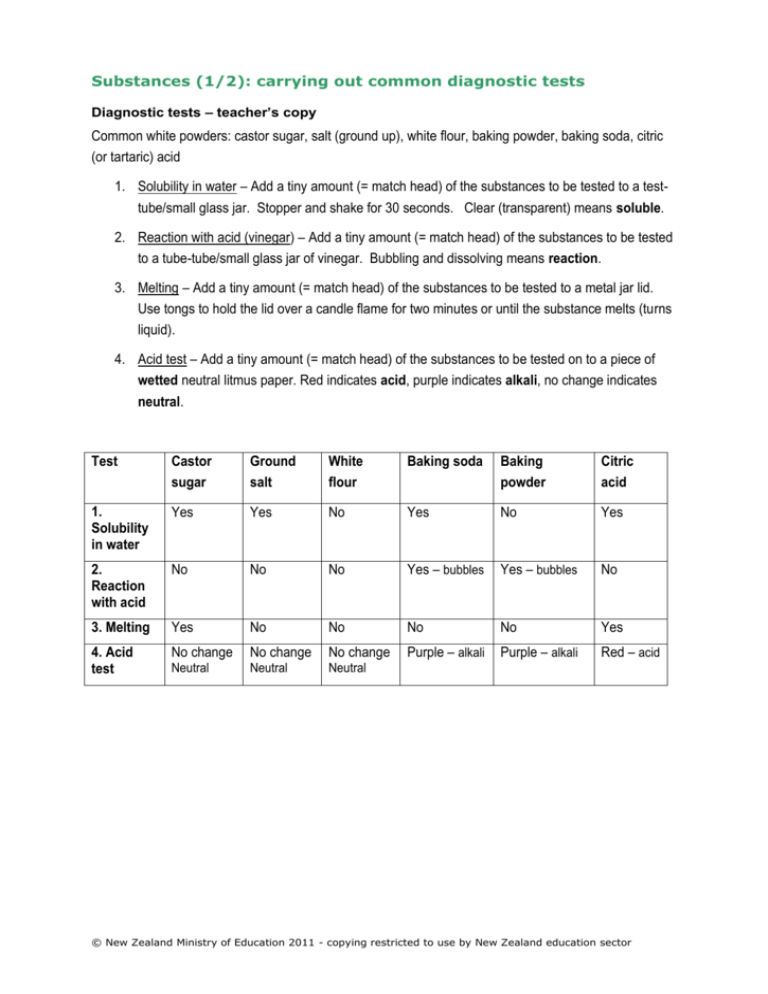
Substances (1/2): carrying out common diagnostic tests Diagnostic tests – teacher’s copy Common white powders: castor sugar, salt (ground up), white flour, baking powder, baking soda, citric (or tartaric) acid 1. Solubility in water – Add a tiny amount (= match head) of the substances to be tested to a testtube/small glass jar. Stopper and shake for 30 seconds. Clear (transparent) means soluble. 2. Reaction with acid (vinegar) – Add a tiny amount (= match head) of the substances to be tested to a tube-tube/small glass jar of vinegar. Bubbling and dissolving means reaction. 3. Melting – Add a tiny amount (= match head) of the substances to be tested to a metal jar lid. Use tongs to hold the lid over a candle flame for two minutes or until the substance melts (turns liquid). 4. Acid test – Add a tiny amount (= match head) of the substances to be tested on to a piece of wetted neutral litmus paper. Red indicates acid, purple indicates alkali, no change indicates neutral. Test Castor sugar Ground salt White flour Baking soda Baking powder Citric acid 1. Solubility in water Yes Yes No Yes No Yes 2. Reaction with acid No No No Yes – bubbles Yes – bubbles No 3. Melting Yes No No No No Yes 4. Acid test No change No change No change Purple – alkali Purple – alkali Red – acid Neutral Neutral Neutral © New Zealand Ministry of Education 2011 - copying restricted to use by New Zealand education sector
